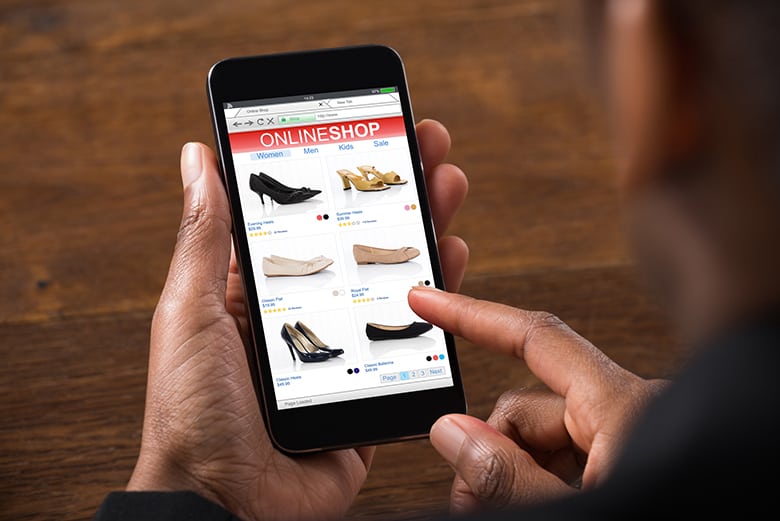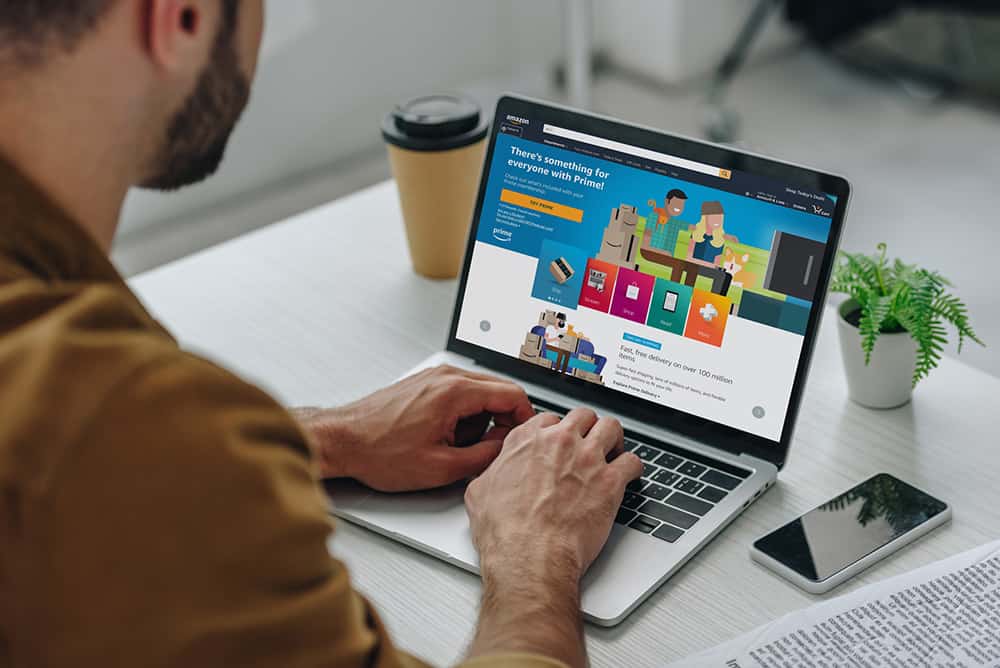You know how you just got a new job and your boss said “You're on your own now, kid”?
Yeah. that's what starting an e-commerce store feels like.
You have to figure out everything: the product descriptions, the customer service policy, even finding that first sale.
The good news is that there are tons of ways to increase revenue for your store! Here are 20 quick tips to get started with increasing ecommerce sales and revenue today:
1. Increase your prices
One of the easiest ways to increase your ecommerce store revenue is to increase your prices.
This might seem counterintuitive but research has shown that a higher price can lead to more sales. This is because people will feel like they're getting more value for their money.
You're going to see increased revenue from just people buying at a higher price but you can also leverage discounts and promotions to increase the revenue further.
As an example, you could have an exit-intent popup that presents a discount when people are leaving the site without purchasing anything.
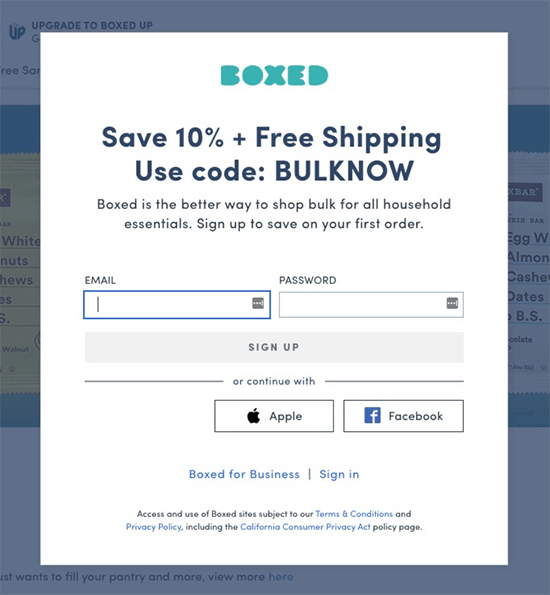
Tip: To increase the revenue from your promotional pricing, you can use a reverse countdown timer to create a sense of urgency and scarcity.
2. Show Them You're Trustworthy
An easy way to get more sales for your online store is by showing your customers that they don't have to worry about their order, credit card details, or other issues.
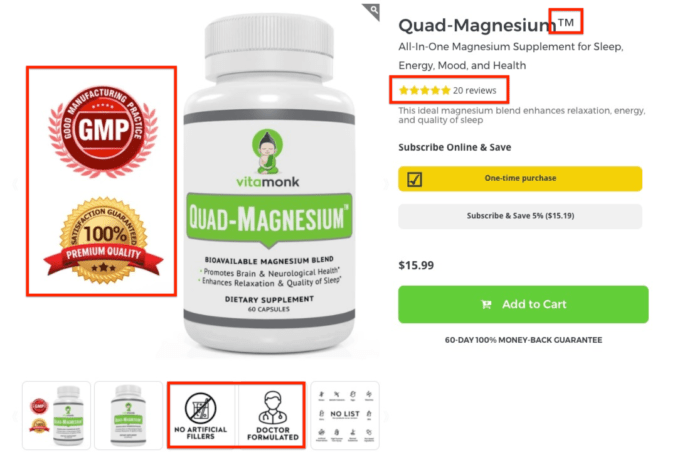
Make use of customer testimonials and reviews – these are great ways to show your customers that they can trust you.
Studies have shown that customer reviews have a huge impact on your conversion rates. People are more likely to purchase a product if they see that other people have been satisfied with it and that you're not a brand new store just winging it.
Try asking for feedback on every order, and include this in the comments section of each product. You could offer an incentive to get more and more honest reviews.
If you can't get feedback, use a review service like Trustpilot to show your potential customers that you're legit.
Another great tool for this is called Proof, which displays tiny little popups with recent purchases people have made on your website.
It'll display the name of the company, date of purchase, product purchased and whether or not they're a happy customer.
Tip: To make sure you're getting positive feedback, offer incentives for customers to post their review after the order has gone through or ship out thank you cards and coupons
3. Make Use of Upsells
The main goal of an upsell is to get customers to buy a better version of an original product. How can you incorporate upsells into your e-commerce store?
An example of this would be buying a newer version of an iPhone instead of the one they had in their cart or reminding them that there's a model with more space available or other perks.
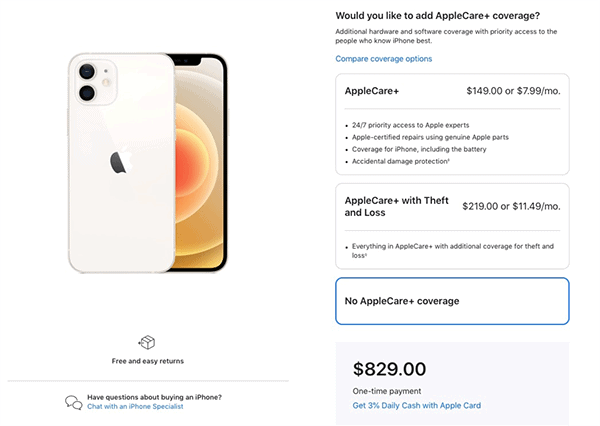
You can do this with a variety of products – if you're selling protein bars, you could offer a bigger box with a discount for buying in bulk. Selling smoothies? Offer a reusable bottle to pack them in.
Ever been to a restaurant, made your order, and heard a pitch about that amazing dessert? If you're anything like me, you probably paid for that damn lava cake without having any intentions to do so when sitting down.
That's the power of upselling.
4. Implement Cross-Selling
Cross-selling is similar to upsells but instead of offering upgrades, it offers products that complement the customer's original purchase.
For example: If a customer buys an iPhone, you might offer some cases or screen protectors to go along with their new phone as well.
You'll get the best results by promoting cheaper products and impulse buys, which aren't hard to commit to.
If you're not sure what your customers are interested in, take a look at some of your biggest orders and see what people are adding along with the main items.
For newer stores that may not have this type of history yet, you can find similar products on Amazon and look at the “Frequently Bought Together” section they have.

Yup, the biggest e-commerce store in the world is using the same exact strategies.
5. Make Product Selection Easier
Most e-commerce stores have thousands of products but make most of their money off a small percentage of those products.
You already know what people are most likely to buy so direct the users attention to those products.
Highlight them on your homepage, add badges like “Most Popular Choice” in your category pages, or start getting rid of products that aren't as popular.
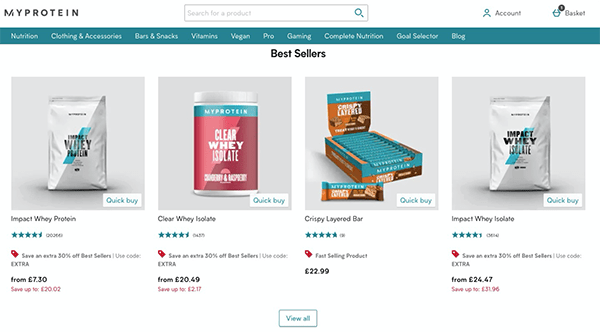
Studies have found that when we are presented with too many options, we get overwhelmed and may not make any decision at all.
When we are given fewer options, the brain is more engaged and makes a better choice.
6. Implement One-Click Checkout
One-click checkout can reduce checkout time by up to 25% and increase conversion rates, according to a study from Akamai.
Too many steps during the checkout process can frustrate customers and result in them abandoning the purchase altogether.
The good news? It's an easy fix! Simply install one of many plugins available for eCommerce platforms like WooCommerce, Shopify or Magento to make it happen quickly on your site with no code required!
I'm confident that at least a third of my Amazon purchases have been impulse buys thanks to their one-click checkout.
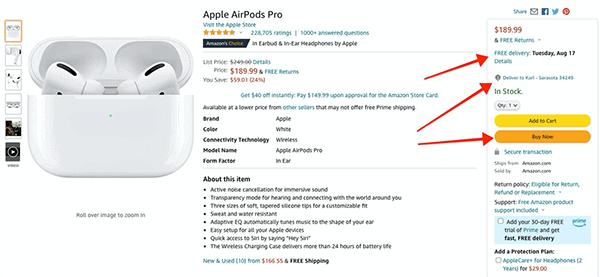
This is especially important if you're selling products that people may buy on a regular basis such as supplements, vitamins, or other health and beauty items.
7. Improve Your Conversion Rates
One of the best ways to grow your online store is through conversion rate optimization (CRO). This will get you more sales with less traffic, which means you'll get better bang for your advertising buck.
There are a lot of ways to improve your conversion rates.
One way is to balance your page design so people don't get overwhelmed and abandon the site, but also have enough information for them to make a decision.
You can do that by following these best practices:
- Use headlines with benefits or promises as opposed to just plain old statements
- Keep your paragraphs short (about six sentences)
- Add bullet points rather than blocks of text in order better break up content while still providing enough detail on each point
- Repeat important words or phrases within an ad copy instead of using synonyms because this will help readers remember what you're saying more easily. For example, use “healthy” instead of “tasty.” Try not to overdo it though because repetition can annoy users
- Improving copywriting or page design so that it's more attractive and trustworthy – it makes it easier for people to convert
- Developing an effective checkout experience with appropriate offers and incentives aimed at increasing conversions like we discussed earlier
The goal is always to make it easier for visitors to take the next step by making their lives better!
When it comes to conversion rate optimization, you'll need to focus on data-driven decisions and testing.
You'll need to know how good your current conversion rate is, what the average industry conversion rates are, and set some goals for yourself.
It's important to have a system in place that will help you track everything – from where traffic is coming from, which products people are buying most often on your website, or if they're getting stuck at any point during their shopping experience.
You can then use this data to inform future business decisions related to SEO, content marketing strategy, etc.
The goal of CRO isn't just about getting more customers through the door – it's also about improving customer satisfaction so that visitors keep coming back again and again!
So remember: usability + trustworthiness + value = total conversions.
Start with major things like the design itself instead of worrying about the color of the font. If you've got a good design, then everything else can fall into place from there.
8. Offer Free Shipping (And Be Fast!)
In this day and age, free shipping isn't optional for e-commerce stores.
Customers have come to expect free shipping, and it's important for stores to meet that expectation so they don't lose business.
If you're worried about shipping costs eating into your margins, it's time to raise your prices.
You'll find that customers are willing to pay a few cents more per item if it means they won't have to wait a week for their purchases, or endure the emotional pain of spending $15 for shipping – so long as the price remains competitive with other stores.
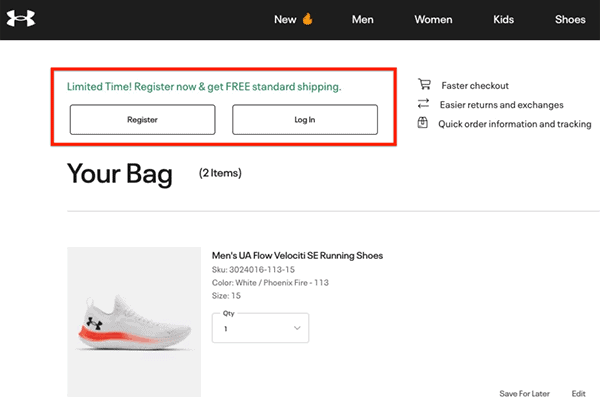
Another important aspect of this is shipping speed.
What do you think your customers would rather have, a store with free shipping that takes two weeks to deliver the products they purchase or one that charges for shipping but ships in three days? Chances are, they'll choose the latter.
9. Start Using Email Marketing
Most successful ecommerce stores generate close to 40% of their revenue from email marketing, which is why it's not surprising that companies like MailChimp and Constant Contact have grown into multi-billion dollar businesses.
If you're just getting started with your ecommerce store, make sure to sign up for an account right away so you can start building a list of customers to promote to in the future as well.
You can email existing customers about new product launches, offer discounts, or just send them a friendly hello to keep your brand in the picture.
If you're not sure where to start with your email marketing campaign, we recommend that you do some research on what other e-commerce brands are doing and then create something similar for your company.
You could make a purchase at a company like Under Armour and then pay attention to the emails they send you in the future.
You might notice a lot of coupons or deals for clothing that are similar to what you just bought, and this is because they want to encourage repeat business from customers who have already shown interest in their products.
One of the easiest ways to start with email marketing is by implementing cart abandonment emails.
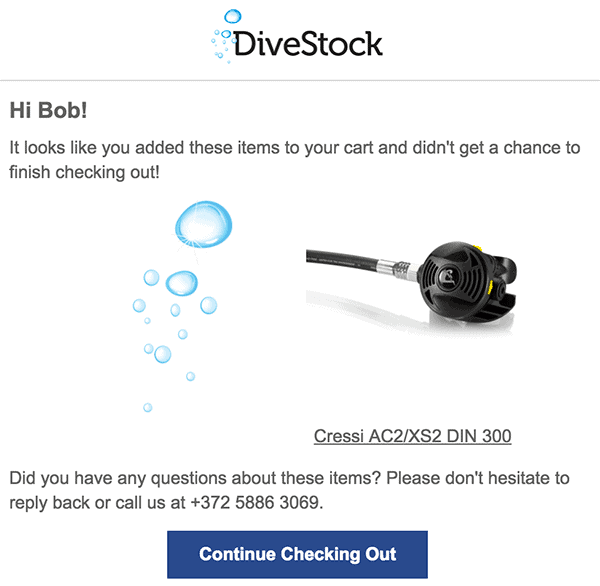
If someone signs up with your company but does not complete the purchase after a set amount of time, you can send them an email reminding them to finish their purchase and offering incentives for doing so.
As always, make sure that any emails you are sending out from your ecommerce store or organization have been approved by whoever is responsible for marketing – you don't want to wing it.
It's also critical to test your emails before sending them out. Look for grammar issues, broken links, and other problems.
Don't ever spam people, and always make sure you are following the CAN-SPAM Act when sending out any form of email marketing.
If you'd like to learn more about this, check out our guides to email newsletters as well as email marketing automation.
10. Improve Your Site Speed
Studies have shown that site speed has a direct correlation to sales.
Improving site speed can be done by minimizing the number of images, removing plugins that are not needed, and reducing page weight with quicker loading fonts or eliminating unnecessary graphics.
A study from Akamai found an increase in conversions for e-commerce sites after implementing their recommendations on site performance optimization: 95% higher conversion rates, 40% lower abandonment rate, and 50% faster load times.
Not only is site speed critical for conversion rates and your user experience, Google has released several updates placing additional emphasis on site speed in their ranking algorithm.
In other words, if your site is slow, you're going to have a tough time ranking well in Google.
You can use Google's PageSpeed Insights to test this and see how you're doing.
How to Improve Ecommerce Store Speed
A simple way to make sure that site speed is not compromised, and your conversions are solid? A content delivery network (CDN).
A CDN caches static files like images, stylesheets or scripts on servers around the world.

When visitors come to your website from another country an image can be delivered locally rather than over slower links around the world.
However, the biggest site speed mistake we see made is using images that are far too large.
Large images take more time to download, which takes longer for your site load.
In addition, the bigger an image is in pixels (e.g., 800×600), the slower it will render on a screen.
The worst part of this mistake? Large images can make up 50% or more of your website's loading speed and it's something that can be addressed in a matter of minutes.
11. Use Retargeting Ads
Retargeting is one of the most powerful forms of advertising.
Retargeting ads are displayed to people who have visited your site in the past, but not made a purchase. These people are already much more likely to buy your product or service due to familiarity.
Not only that, you'll already know which products they're interested in and can figure out the potential objections they may have.
If it's an expensive product, you can create a retargeting ad with a discount. Perhaps it's something discreet and they're worried about privacy? You could have an ad following them around, explaining your processes around this (ironic, isn't it?)
Retargeting ads can be displayed via social media channels like Facebook and Twitter, as well as through email campaigns that are sent to specific audiences.
As a result of retargeted advertising, your ecommerce store will see an increase in revenue from people who may not have otherwise engaged with your brand again or made a purchase on another site instead.
The biggest mistake we see made with retargeting is simply sending the user back to the same page. If they didn't convert the first time, why would they buy now?
12. Get Your SEO in Order
Search engine optimization (SEO) is the art and science of improving your rankings in Google's organic search results. There are many factors that contribute to a site's search ranking, but having an SEO-friendly website is the foundation of it all.
Just by having a basic understanding of on-page SEO best practices, you can increase your site's traffic and future potential.
One of the most important things to understand about SEO is that Google needs words on a page to understand what it is about. This is why having lots of unique content is critical.
This applies to your homepage, your category pages, product pages, and of course, your blog articles.
Add valuable content that covers the topic in-depth and you'll be perceived as an authority on the topic by both Google and your users.
The second key part is off-page SEO which basically means getting backlinks to your site.
Backlinks are links pointing to your site from other websites and they effectively count as votes of authority.
How to Build Backlinks for Ecommerce Stores
The best ways to get backlinks nowadays are:
- Guest blogging for authoritative sites in your industry
- Sharing the valuable, relevant content you created with other website owners (outreach)
- Creating relationships with journalists who have covered topics in your niche
13. Become Your Own Customer
My biggest tip for growing your ecommerce store is to become your own customer and take a look at your business from that perspective.
When you go to your homepage as someone who has never heard of the brand, does it look trustworthy to you? Or does the logo look cheap and the images blurry and poorly cropped?
Is this someone's side-project or a professional, serious business?
Let's say you already know what product you want to buy… Is it difficult to find it on the website? Do you know where you'd have to click next?
You should keep a notepad next to you as you go through this and write down every potential question that comes to your head as you're doing this exercise.
Make sure to go through the entire process including actually checking out and buying something. Was it easy to fill out all the forms?
Not only that, you'll actually want to ship the order.
Did you get the email confirmation you were expecting? What about an invoice for your business or a notice about when to expect your order to arrive?
The odds are high that if some of these things pop into your head or make you worry, it'll be the same with dozens if not hundreds of your potential customers.
The number one rule in sales is to address the customers objections and fears before they can voice them. This process will help you do so.
14. Use Google Ads
Google Ads is a great way to increase ecommerce sales because it helps you target specific audiences that will be interested in the products or services that you offer.
You can tailor each individual ad to a specific keyword or group of keywords, as well as set the geographic location and language that you want the ad to be shown in.
You can also use remarketing with Google Ads by displaying ads for people who've visited your website before but didn't make a purchase, as we discussed earlier.
The Ads Manager helps automate aspects of your campaign such as bidding and scheduling so that you can focus on optimizing the performance of your ads instead.
Google Ads work by targeting keywords that you find to be relevant for your product or service.
You can enter these keywords into the Google Ads Manager search box and google will suggest a list of related phrases that it believes people are searching using those specific words, such as “cheap men's dress shoes” if you type in “shoes.”
This allows you to easily brainstorm hundreds of keyword combinations to get in front of the people who are looking for your product.
If you have a women's clothing store, google will suggest keywords such as “women's tops,” “summer dresses” and “sandals.”
The most popular google ads strategies include targeting these keyword phrases with broad match or contextual match types such as exact or phrase.
The number one mistake you'll want to avoid with Google Ads is bidding on a keyword phrase that is too broad. If you're selling men's shoes, you'll waste half of your budget by targeting broad terms like “shoes” that will also display to women.
This is an oversimplification, but hopefully you get the point.
Google will also suggest related keywords to bid on if you want to reach more people who are searching for your product but aren't using the exact same words in their google search (for example, women's sandals vs. flip flops).
15. Social Media Advertising
Advertising on social media platforms like Facebook and Instagram is another great way to increase ecommerce sales by acquiring more traffic.
Facebook Ads for Ecommerce
Facebook advertising has a lot of flexbility when it comes to targeting your audience.
For example, you can target people in your current location or people who live near a specific zip code.
Facebook also has great targeting options for age ranges and interests as well. You could target the fans of a specific brand, page, person, or even group.
This is a great way to increase the revenue of your ecommerce store by targeting people who are already interested in what you're selling, instead of interrupting random people.
Instagram Ads for Online Stores
Instagram ads are a better fit if your brand has a visual appeal.
For example, if your products are clothing or food, Instagram has more of an opportunity for you to show off your product than Facebook does.
However, even with this type of targeting there is still a lot that can be done on social media like Facebook and Twitter as well.
Now for the big question – how much does Facebook advertising cost?
The answer is that the price varies because there are so many different targeting options.
You can spend anywhere from $0.50 to over $1,000 per ad depending on what type of targeting you're looking for and how specific it needs to be.
If the audience you're targeting has a lot of competition, the prices are going to be much higher compared to going after a niche market.
The first thing you'll want to do is come up with a very specific targeting strategy. It all starts with knowing who you want to target and why they're a good fit.
This will help you determine what your budget should be and where the bulk of your advertising dollars are going to go.
You can start by identifying a goal for each campaign, like increasing conversions or convincing them to buy now instead of later.
You can use some of the strategies we discussed earlier in the guide to maximize your conversions and get the best bang for your advertising buck.
It's also important to remember that Facebook and other social media platform want the best experience for their users so people keep coming back. This means that if your ads have a good engagement rate (lots of clicks, comments, reactions) they're going to charge a much lower rate for your ads.
16. Partner With Other Ecommerce Stores
Partner with other online stores to increase your traffic and sales. Search for similar websites that are in the same niche as you (but not direct competitors), and see if they're interested in setting up a cross-promotional agreement. You can also try advertising on their website through banner ads, sponsored posts, or even setting up a retargeting pixel.
Let's pretend you have a store that sells swimming accessories, some of your products may make for a good promotion with a stand-up paddleboard brand. You can offer them a commission on each product sold (e.g. via a custom coupon or landing page) in exchange for promoting your store or running a contest with you.
You see giant brands doing this all the time with their “official sponsors,” and it's a great way to increase your store's exposure without having to spend as much on marketing.
Maybe you can't get them to send out an email campaign for you or create a social media post, but what about a guest post on their blog?
This way you could rank for your keywords with an additional website, reach a new audience, and also get a backlink to your site – helping with your own SEO efforts.
It's a win in so many ways and doesn't take a lot of effort or negotiation in most cases.
17. Implement a Loyalty Program
One of the best ways to increase online sales is by increasing the lifetime value of each customer. A program that rewards loyal customers with points for spending a certain dollar amount can increase sales by up to 20%!
How to Implement a Loyalty Program
For Shopify store owners, implementing a loyalty program is easy. You simply head to the app store, search for a loyalty program app and then install it.
For other systems like WooCommerce or Magento, you can head to the developer's website and find instructions on how to add this feature to your site.
A key thing to remember is that your loyalty program has to actually be worth participating in.
Examples of Good Loyalty Programs
Just look at airline miles, credit card rewards, and hotels – there are entire sites dedicating to maximizing these and the rewards are significant enough for people to care and even optimize for.
There are plenty of smaller brands that have done this well in other industries, and it's worth figuring out how to put it in place for your own online store.
I've worked with a contact lens store who increased the lifetime value of their customers by over 130% after implementing a loyalty program.
18. Add Live Chat and Customer Service Elements
Make it easy for customers to get in touch with you, whether they're trying to ask about your store or just need help finding the right product that fits their needs. It'll increase customer satisfaction.
Studies have shown that having a live chat option (like an icon on your website) increase sales by up to 25%.
A customer service representative can help ensure that you have a good conversion rate by being knowledgeable about your products and helping customers find what they're looking for. Often times, the people asking questions are the ones with their credit card in hand, ready to buy.
If you don't have a big enough team to keep this available, don't sweat it.
Just by having a live chat on the website (even if it goes to your email) increases conversion rates and gives people the confidence to buy. Most people won't actually have a question but the peace of mind is still there.
19. Add Clear Calls-to-Action
The easier you can make it for customers to buy from your store, the better off you are.
Use call-to-action buttons that convey what action they need to take and where they should do it.
If people are on the homepage, you could have a big banner telling them to check out the best-selling items.
If they're on a product page, tell them to buy now instead of “Add to Cart”.
Trying to get them to sign up for a newsletter? Who wants to do that?
Instead you could rephrase it as joining your VIP list or offer some kind of incentive to get their email – such as a guide or a discount.
Here's a guide to creating high-converting CTAs.
20. Offer Incentives in the Checkout Processes
There's no better way to get people excited about buying than giving them something for free. This could be a discount, an offer for free shipping, or even a “buy now, get something for free” deal.
Common examples of this include a buy one get one free offer or a buy one get the second at 50% off.
The checkout process is the number one place ecommerce stores lose sales so anything you can do to make it more enticing will keep customers on board.
It's especially important to follow all of our other tips in this stage.
Display customer testimonials if possible, have trust badges and show that the process is secure, give them a list minute discount or emphasize free shipping.
You'll also want to spend a big part of your conversion rate optimization budget on this – taking your conversion rate from 1% to 2% in the checkout stage will literally double your sales and it doesn't take a whole lot to make that improvement if you've been paying attention.
Conclusion
We hope this article has given you some food for thought about what type of changes need to be made at your company if you're looking for ways to boost profit!
If any of these ideas seem like something worth trying out, then we recommend taking small steps and implementing one thing at a time so you can measure the results and know when you're making progress.
Every business is different and it's important to remember that what may work for one company won't always work for another.
FAQ
How can I increase my online sales quickly?
The quickest way to increase online sales is by driving inbound traffic to your website via advertising. Facebook, Instagram, and Google Ads are the most popular channels and are all easy to start with.
What is the best way to increase your sales?
To increase ecommerce sales you have two main factors, the number of visitors and how many of those visitors convert into sales. You'll want to determine the industry averages for your business, see where you're lacking more and focus on that area first.
What's the best marketing strategy?
Unfortunately the best marketing strategy is different for every individual business. A few ways to increase your online sales is by building a brand, investing in marketing and content creation, improving the customer experience on your site, driving conversions with compelling offers and calls-to-actions. There are so many different things you can do; it's important to remember that what may work for one company won't always work for another.
